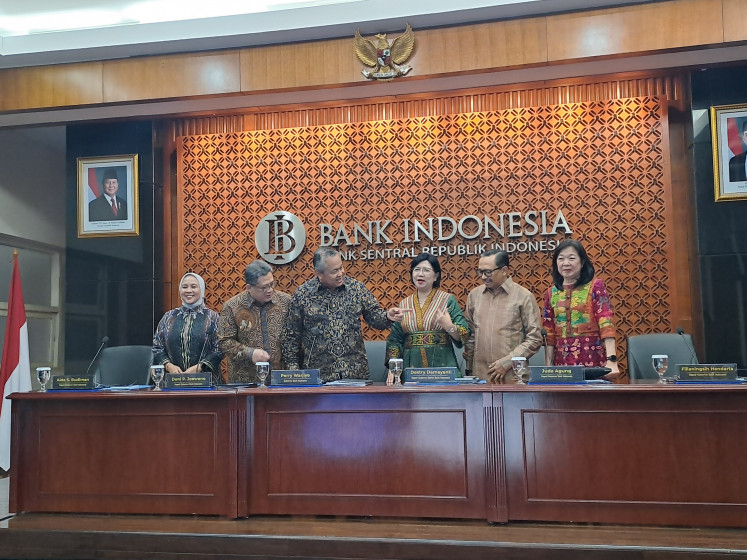Popular Reads
Top Results
Can't find what you're looking for?
View all search resultsPopular Reads
Top Results
Can't find what you're looking for?
View all search resultsWest Kalimantan’s storm’s stork at risk of extinction
A recent survey conducted along the coastal areas of Kubu, West Kalimantan, shows an alarming rate of population decline among the local bird ciconia stormi (storm’s stork), raising concerns about the condition of the local mangrove forest ecosystem
Change text size
Gift Premium Articles
to Anyone
A
recent survey conducted along the coastal areas of Kubu, West Kalimantan, shows an alarming rate of population decline among the local bird ciconia stormi (storm’s stork), raising concerns about the condition of the local mangrove forest ecosystem.
The bird, found throughout Borneo, was classified as critically endangered by the International Union for Conservation of Nature in 1994. In 1994, it was thought that there might be just 500 of the birds left in the world.
There might be only 10 of them left in Kubu Raya regency based on a survey conducted by conservation group World Wildlife Fund Indonesia (WWF Indonesia) between 2011 to 2017, Abdurahman Al Qadrie from the Ketapang Friends of Birds, said.
The storm’s stork is an indicator of a wetland’s healthy condition, he said. Their presence shows that the ecosystem remains stable with a sufficient food supply chain. A pair of the birds needs a home-range of around 25 kilometers squared.
“They need a vast area for their sustainability. The wetlands must also be in a healthy condition with an abundance of food such as small fish, snakes, lizards and snails,” he said on Wednesday.
The low population of the bird indicates that the area is in an unstable condition. Though threatened by environmental disintegration, the mangrove ecosystem in Kubu Raya is still among the best in Southeast Asia. It is the biggest mangrove ecosystem in West Kalimantan and is host to 40 out of 60 kinds of mangrove species in the country.
The survey was conducted within 733 hectares out of the 92,610 ha of mangrove wetland area. Besides storks, the wetlands are also a habitat for other protected mammals, reptiles and fish. There are also 112 bird species identified in the mangrove areas.
West Kalimantan’s WWF Indonesia species officer Dewi Puspitasari said the Kubu landscape was dominated by rivers and coastal areas. Land use within the area has threatened the existence of the area’s endemic animals.
“The activities must be conducted wisely by not dismissing local wisdom in preserving the mangrove ecosystem as a wildlife habitat,” she said.
Moreover, she said, rampant wildlife hunting also impacts on the sustainability of the animals, as food chains are disrupted by the hunting and this can cause overpopulation in other species.
Jejak Pesisir Nusantara, an NGO, is trying to raise awareness among local people about the issue of ecosystem preservation.
The group’s head Yuan said the organization had been actively promoting sustainable economic development to local people such as mangrove honey farming and environmental friendly fishing methods. With these activities, the locals can reap economic benefits without harming the environment.
The mangrove forest in Kubu is also a stopover for birds migrating from North Asia and Siberia before they reach Australia and New Zealand. The phenomenon occurs annually between August to April.










